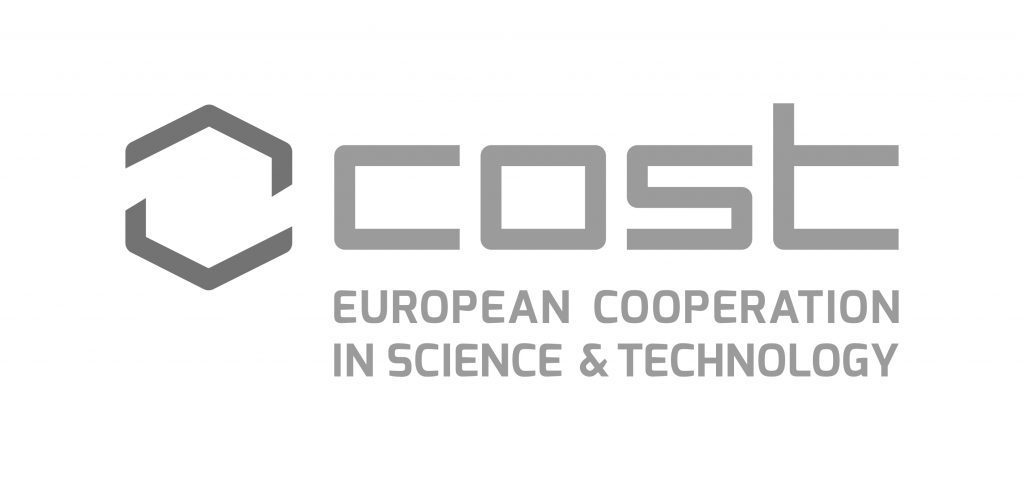* National Research Council of Italy, Institute of Studies on the Mediterranean (ISMed), Napoli, Italy; varriale@ismed.cnr.it
** Earth and Environmental Sciences Department, University Aldo Moro, Bari, Italy;
National Research Council of Italy, Institute of Research for Geo-Hydrological Protection, Italy
This special issue is the main scientific output of the homonymous bilateral project between Italy and Japan “Damage assessment and conservation of underground spaces as valuable resources for human activities in Italy and Japan”. The project was financed within the agreement regarding the scientific cooperation between the National Research Council of Italy (CNR) and the Japan Society for the Promotion of Science (JSPS) signed on October 23, 2011. The fund supported mutual scientific exchanges between the teams, which were led by Roberta Varriale from the Institute for Studies on the Mediterranean (ISMed), Italy and by Chiaki T. Oguki from the Graduate School of Science and Engineering of Saitama University, Japan during the period 2018/2019.
In this context, two missions from representatives of the Italian team to Japan and two missions from the corresponding Japanese team to Italy were financed. During these missions, the two teams had the opportunity to share their expertise with reference to experimental and multi-disciplinary approaches to the study, monitoring and management of several selected case studies within the newborn class of Underground Built Heritage (UBH). Choice of the case study was dictated by criteria based on their archaeological, artistic and architectural values while considering the historical and cultural uniqueness of the sites, and their connections with the identity of local communities as well.
In view of the significant communicative role played by the underground environment, stimulating several projects addressed towards the regeneration of subterranean spaces in both Italy and Japan, these countries were considered to be exemplary study cases to compare the Eastern and Western approaches to knowledge and understanding of underground spaces that were excavated and used by man in past epochs, to test theoretical researches and to establish long-lasting cooperation to stimulate future actions in this specific sector.
In this regard, the papers included in this special issue can be considered for a two-fold goal: a first attempt in the process of transition from onsite visits and cultural exchanges between the two countries to the definition of a theoretical methodology for a comparative approach to Italian and Japanese underground sites; and, at the same time, the starting point for a new project financed within the same agreement for the period 2020/2021.
The group of papers here published covers different issues related to the survey, monitoring, knowledge, and transferring of scientific data to the local community about artificial cavities. Authors have very different backgrounds, from archaeologists to historians, geologists, engineers, architects, etc. In our opinion, this multi-disciplinary approach represented the main success of the bilateral project: that is, putting together different expertise, in this case from different cultures too, thus facilitating and stimulating sharing of experiences, and comparison among variable approaches dedicated to research, safeguarding and valorization of the cultural heritage contained in the underground of these two countries.
The special issue includes nine contributions, covering the above topics through theory, practices, historical documentation and technical issues. Moving to the specific articles, Roberta Varriale, following a brief introduction of her theoretical methodology for the analysis of cultural elements within the UBH class, proposes a three-step comparative study between Japan and Italy. The first step refers to the translation of the basic chart to the respective national scenarios to allow visual, general comparison between the Italian and Japanese systems. The second concerns the selection and the analysis of two homogeneous systems: Pizzofalcone Hill in Naples (Italy) and Yoshimi Hyakuana Hill in the Saitama area (Japan). The third refers to the study of historical and contemporary approaches to re-use strategies implemented in the two systems.
In her paper, Laura Genovese analyses the paradox of Naples, one of the Italian case studies of the project, a town whose historic centre is included in the list of UNESCO World Heritage since 1995. Genovese underlines how, while underground routes are at the core of several scientific projects for the comprehension of the aboveground city and, at the same time, at the centre of several regeneration processes that transformed the sites into very popular attractions among tourists, no references to the subsoil can be found in the UNESCO dossier. According to the Author, this omission was due to the fact that, at the time of the nomination, the subterranean elements at Naples had not been re-discovered or valorized yet. Nevertheless, the underground has always had a primary role in the history of Naples, during many different epochs. In the article, Genovese defines some guidelines for the future updating of the UNESCO dossier on the basis of new re-discoveries and regeneration activities carried on during the last decades.
Other Italian case studies are examined in the contribution by Tiziana Vitolo, who focuses her analysis on two Roman underground water cisterns in Southern Italy: the Cisternone in Formia (Latium) and the Palombaro at Matera (Basilicata). In her study, these underground elements interpret the sense of place of the aboveground cities, physically reflecting their urban and social development and representing a symbol of belonging for local citizens. Indeed, the histories of those UBH elements are not only open books about the transformations of the aboveground settlements but also tangible signs of the construction and consolidation of the anthropological and social theoretical concept of a sense of place.
Bruno Venditto addresses his study to three dismissed mining towns: Carbonia (Sardinia, Italy), Hashima’s island (Japan) and Kolmanskop (Namibia). In his analysis, the hypothesis of implementing the potential of these sites within the class of eco-museums is proposed. Venditto depicts a much more inclusive approach to the management of the abovementioned sites, through the involvement of local communities to address social, cultural and economic development on the basis of regeneration plans regarding this specific type of artificial cavities (mining sites).
The use of innovative technologies for the observation of changes occurring over surfaces of underground artificial cavities is the topic of the article by Leo, Argentieri, Carcagnì, Spagnolo, Mazzeo and Distante. The Authors present the main theoretical issues at the origin of their work, and then implement them through experiments in two case studies of the bilateral project, one in Japan and one in Italy. In practice, the algorithmic pipeline described in the article is able, starting from data extracted from a low-cost sensor, to extract accurate metrology information that could be used for monitoring underground cultural heritage sites, with promising results for future applications.
From the Japanese team also, the contribution by Hayakawa, Ogura, Tamura, Oguchi and Shimizu deals with modern technologies and recent developments in the acquisition of high-definition topographic data. These have become of great importance to obtain detailed three-dimensional morphological data, and their use in the subterranean environments is being grown in recent years, especially in those caves where site logistics allow transport without problem the equipment. An analysis carried out by performing terrestrial laser scanning is presented at Taya Cave, in Yokohama City, Kanagawa Prefecture of central Japan. After performing the terrestrial laser scanning from multiple scan positions within the cave system, and processing the data from the point clouds to convert them into a mesh model, the model itself was printed in 3D and used for teaching in an elementary school in the local area. This is a point of particular interest, since it contributes to the formation of awareness in the local community about the importance of the underground site, at the same time showing modern technologies to survey and study elements of the cultural heritage, in the attempt to develop sustainable protection of the cave in the future.
These latter issues, namely the transferring of knowledge about the historical site to the local community, starting from young pupils, and actions toward the protection of the site, are analyzed in the contribution by Tamura, Oguchi, Hayakawa, Ogata, Ogura, and Morita, where the same Taya Cave is dealt with. The cave, which is a religious site hosting about 300 reliefs on the walls of the many meditation chambers, is in need of conservation due to deterioration and weathering affecting the rock mass. In 2017, the Preservation Executive Committee of Taya Cave was established to carry out multi-disciplinary surveys based on digital data preservation activities. Remarkable efforts were also made as regards the coordination of the basic research on underground cultural properties with local communities and public educational institutions. This activity of practical cooperation, involving directly the local community (young generation at elementary school, but also elderly people, the main source of oral historical information), is in fact essential for the proper preservation of the underground cultural property. Social issues cannot be disregarded in order to create a community structure that could effectively work in the next future toward the preservation and valorization of the underground cultural heritage site.
Two contributions present technical issues, from the geological and engineering geological standpoints: the first, by a group from the Japanese team, is that by Oguchi, Sakane and Tamura, where non-destructive measurements are applied for evaluating the grade of weathering on the rock mass. These are important methodologies since they do not affect the rock, and do not produce any damage to it, which is of significant value for geo-archaeological sites. Still, in the Taya Cave case study, different techniques are implemented to evaluate the degraded parts of the walls, from the Schmidt hammer to ultrasonic pulse velocity tests. The outcomes allow identifying the most critical parts of the cave system, which should have the priority as concerns the implementation of mitigation measures.
The second engineering geological contribution comes from Mario Parise, dealing with instability issues in underground sites of cultural and historical values. The author discusses the issue of stability conditions in underground sites opened to the public, by highlighting the need to preventively evaluate the possible failures that might occur underground. This should be done through a variety of studies and researches aimed at identifying the possible instability features within the cave system and in their surroundings. Geological survey, geomechanical analysis of the rock mass hosting the cavities, and ascertaining the weathering conditions of the rock mass are the main activities to carry out. After discussing the main characteristics of cultural heritage sites with underground development, and their importance in different parts of the world and for many past civilizations, the article examines the main features observed in the case study of the Taya Cave, in Japan.





